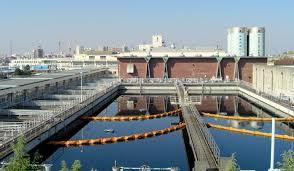Water purification forms a critical link in promoting public health and safety. It involves variety of steps which depend upon the type of impurities in the raw water source. The major operations done are sedimentation, flocculation, filtration and disinfection. Raw water becomes potable after this treatment in the figure below.
Impurities in raw water include suspended, dissolved, colloidal solids, bacteria, toxic substances, color, odor and mineral or organic matter. These can be categorized as chemical, physical and microbiological.
Read Also: Microbiological Examination of Water
The table below indicates the drinking water standards adopted from that obtained in India. Different unit processes and operations are performed to remove different impurities as presented in the tables below.

Table: The Bureau of Indian Standards Defined Levels of Substances in Water and their Permissible Levels
| S/N | Substance/Test | Unit | Desirable limit | Maximum permissible limit |
| 1. | Physical turbidity | NTU | 5 | 10 |
| 2. | Chemical pH | Number | 6.5 – 8.5 | No relaxation |
| 3. | Hardness | As (CaCO ) 3 mg/l | 300 | 600 |
| 4. | Chloride | as Cl mg/l | 250 | 1000 |
| 5. | Iron | as Fe mg/l | 0.3 | 1.0 |
| 6. | Nitrate | as N mg/; | 45 | No relaxation |
| 7. | Fluoride | as F mg/l | 1.0 | 1.5 |
| 8. | Residual chlorine | mg/l | 0.2 – 0.5 | No relaxation |
| 9. | Arsenic | as As mg/l | 0.05 | No relaxation |
| 10. | Coliforms | MPN/100 ml | 10** | No relaxation |
| 11. | E. coli | MPN/100 ml | 0 | No relaxation |
Table: Unit Processes and Operations and Specific Impurities Removed
| S.No. | Unit Processes/operations | Effect |
| 1. | Aeration, chemical oxidation, ion exchange, sedimentation | Colour and precipitate removal |
| 2. | Chemical precipitation, (dosing, mixing, flocculation, settling) ion exchange | Softening (Ca, Mg removal) |
| 3. | Chemical coagulation, (dosing, mixing, flocculation, settling) filtration | Turbidity removal |
| 4. | Aeration, chemical oxidation, adsorption | Taste and odour removal |
| 5. | Irradiation, ozonation, chlorination | Disinfection |
Most details of the above processes have been discussed in the course- Hydrology and Sanitation (EHS 304); hence you will gain much by referring to that for details. It should be known that without applied microbiology, the knowledge and practice of water purification would not have been easy.
Most processes that take place in water treatment or purification still obtain in waste-water or sewage treatment. Against the above background, most of the above processes form different units in this course as you will see. The degree of treatment depends on the intended use or place or fate of final disposal site.
Read Also: Impacts of Waste-water on the Environment, Treatment objectives and Disposal Regulations
Potable water meant for drinking has to meet standards which will not allow the spread of water related and water borne diseases. To this end, any well-meaning country should meet with the standard approved by the World Health Organization (WHO). Applied water microbiology helps in achieving this.
This is done through proper checking of water sources, storage, distribution, and supply systems to avoid its contamination/pollution. There is no denying the fact that EHO‘s are involved in doing this all important work.
The Nigerian Standard for Drinking Water Quality for instance covers all drinking water except mineral water and packaged water. The standard applies to:
Drinking water supplied by state water agencies, drinking water supplied by community managed drinking water systems,
Drinking water supplied by water vendors and water tankers, drinking water used in public or privately owned establishments, drinking water used in food processing by manufacturers,
Drinking water from privately owned drinking water system and used solely for the family residence.
Additionally, mineral water and packaged water shall comply with Nigerian Industrial Standards for Natural Mineral Water (NIS 345:2003) and Potable Water (NIS 306:2004) and used for regulation and certification by the National Agency for Food and Drug Administration and Control and SON respectively.
It is important to mention here that the standards for mineral water and packaged water have different allowable limits for various parameters presented here.
Read Also: Economic Importance and Uses of Cotton Lint

